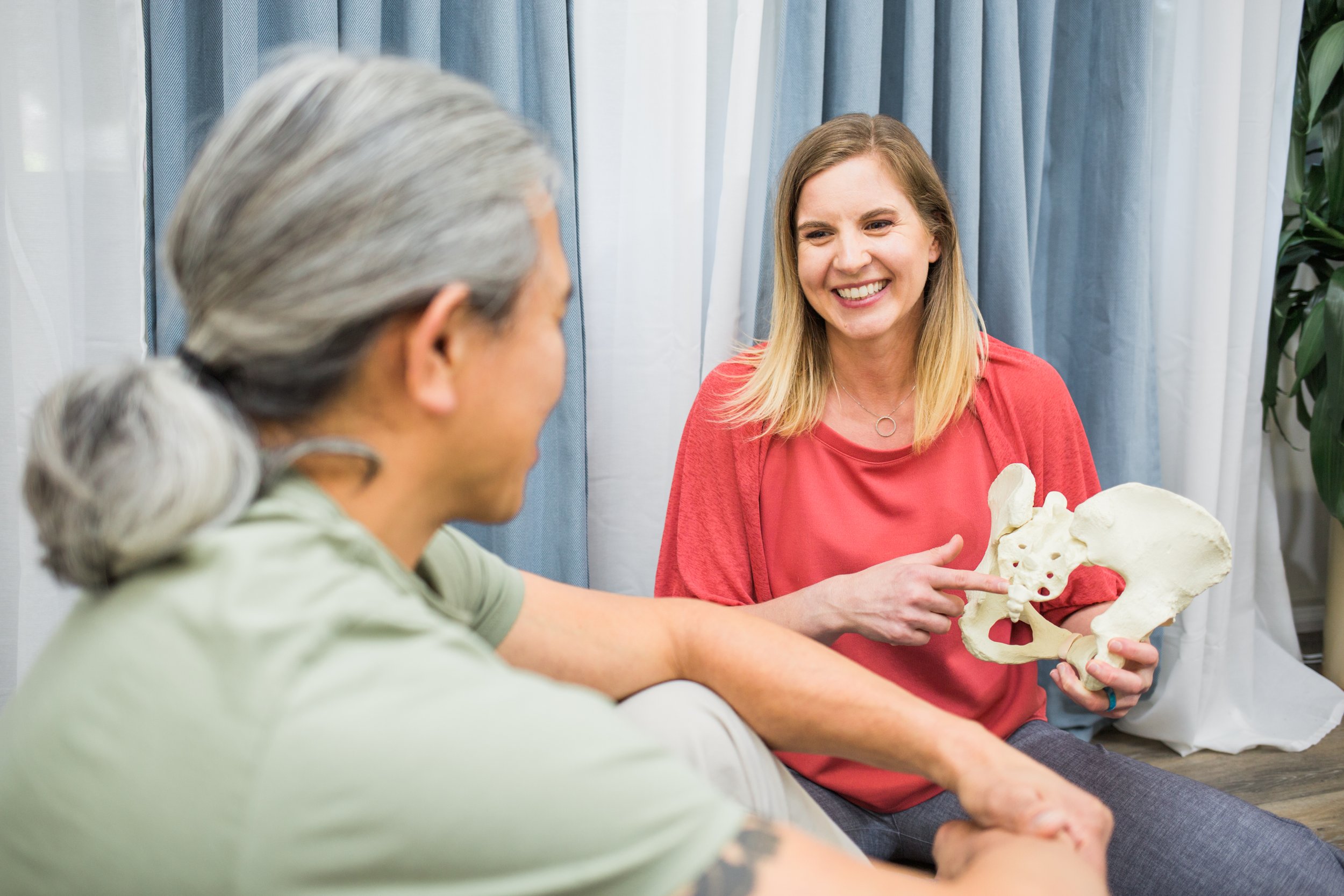
Pelvic Organ Prolapse
Pelvic organ prolapse (POP) is characterized by the descent of organs like the uterus, bladder, urethra, gastrointestinal tract, or rectum through the vaginal walls. Additionally, individuals may experience rectal prolapse, where the rectum or a portion of it protrudes from the anus. The weakening of fascia and pelvic floor muscles represents key factors contributing to the development of POP. Risk factors like obesity and vaginal delivery can lead to the weakening and damage of these pelvic floor muscles and fascia, ultimately resulting in the herniation of organs.
Key facts
Approximately 50% of all women will experience pelvic organ prolapse
Prolapses are categorized on a scale from Grade I to Grade IV, with Grade IV indicating that the organs have completely descended outside of the vagina
About 20% of women will undergo pelvic floor reconstruction surgery to address POP
There is a 30% recurrence rate of POP after surgery, which may necessitate a second procedure
Pelvic floor physical therapy is effective in enhancing pelvic floor muscle function and alleviating symptoms of pelvic organ prolapse
Symptoms
Sensations of vaginal heaviness or bulging
Urinary and/or fecal leakage (incontinence)
Irregular bowel and bladder emptying
Urgency and increased frequency of both bladder and bowel movements
Nocturia, which is nighttime urination
Frequent bladder infections
Pelvic discomfort or pain
Painful sexual intercourse
Causes
Childbirth, especially with vaginal deliveries
Genetics
Menopause
Age-related changes in the pelvic floor and pelvic girdle
Obesity
Hysterectomy
Diagnostic challenges
Women often underreport pelvic organ prolapse symptoms, and healthcare providers may not routinely recommend pelvic floor physical therapy as a treatment option. In such cases, over-the-counter or medically prescribed pessaries can offer some relief. Research has shown that women who undergo pelvic floor physical therapy experience reduced symptoms, improved pelvic function, and enhanced surgical outcomes if surgery is required. Typically, women with Grade III and IV pelvic organ prolapse are advised to consider surgery, and in these instances, pelvic floor physical therapy can be a valuable component of both pre-operative and post-operative care.
How we can help
Pelvic organ prolapse can be associated with pelvic floor muscles that exhibit various issues such as tightness, weakness, or coordination problems. It's worth noting that historically, people diagnosed with POP were often advised to do kegel exercises. However, if your pelvic floor muscles are overly tight, kegel exercises can potentially exacerbate your symptoms. This is why we recommend collaborating with a pelvic floor physical therapist to ensure a proper rehabilitation plan. In some cases, the pelvic floor muscles may need to be lengthened before they can be strengthened effectively.
Additionally, it's essential to recognize that our pelvic floor muscles should work in coordination with our entire core. As women age and experience day-to-day micro-injuries and the natural wear-and-tear on the body, our pelvic floor and core muscles may start working against each other, resulting in issues like incontinence and pelvic organ prolapse.
What to expect
At your initial appointment, we will start by taking your medical history, followed by a comprehensive musculoskeletal examination of your pelvic area. This will include assessing your posture, joint alignment, any muscle restrictions or trigger points, the health of your connective tissue, and muscular strength. An internal examination is often part of this process, but it's entirely optional and will only be conducted if you feel completely comfortable with it. This exam is much more relaxed and comfortable compared to a typical ob/gyn visit, and it provides essential information about your pelvic muscle tone, strength, and coordination. If impairments are found during the exam, the physical therapist can treat the problems with manual therapy techniques resulting in pain relief and improved function. Following the exam, we'll discuss our findings with you and outline a personalized treatment plan aimed at achieving the best results. Most patients start feeling better after their first session and see significant improvement by their third visit.

“This review is for Dr. Jess Fu. I have seen her three times so far and I feel that she has already helped me tremendously in a variety of issues from neck pain, weak core, pelvic pain and overactive bladder. Prior to seeing her, I had tried other strategies that would only result in flare up of these issues and within 2 weeks of our initial visit I could already see improvement. She is very knowledgeable and spent time to really understand the root cause of these issues. I highly recommend her.”
— Jenna N.
